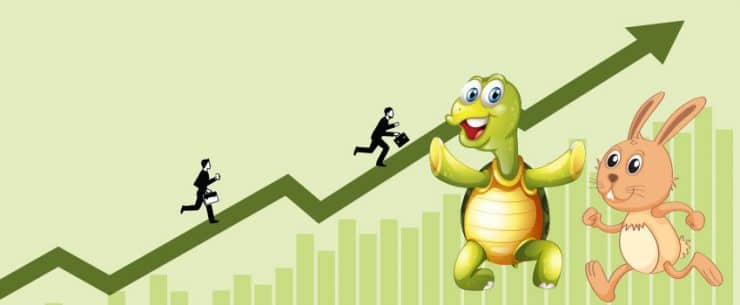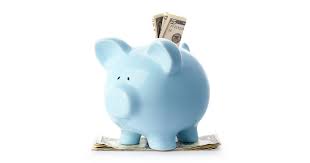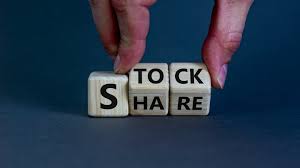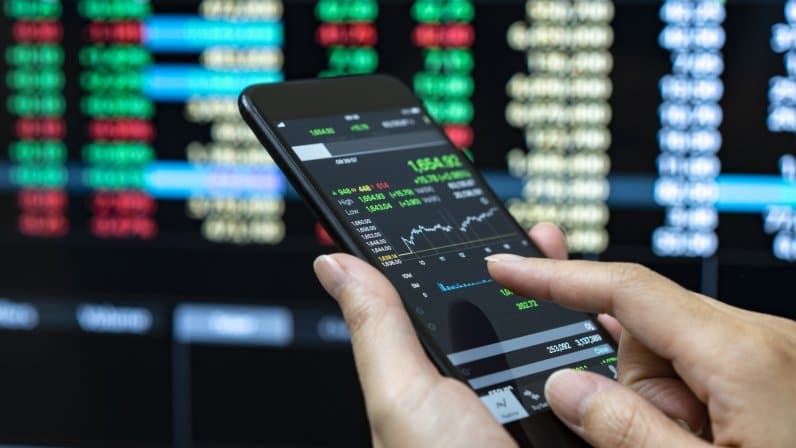How To Invest £1000
Investing can be an important part of planning for the future. Whether you are putting money aside for a rainy day or you are looking ahead to retirement, putting some money aside for investment can help you achieve financial security in the years to come.
However, there are some important decisions that you need to make. There are several different ways to invest and put your money to work and some will have varied results.
In this article, we are going to discuss investment plans and how to invest £1000. This is a relatively small amount and because of this, it can impact some of the investment options you have and the options at low cost.
There are still several choices for your next or first investment fund or retirement fund.
Many people can be intimidated when they start investing, but there are large benefits that can be achieved with little to no knowledge. This article will walk you through the options you have.
What Is Your Appetite For Risk?
The first thing that you need to decide upon when you start investing is your risk appetite. What sort of investor are you going to be? When you read “The Tortoise and the Hare” did you always want the tortoise to win? Or is going to the casino and sticking it all on black more your style?

Investment can range from ultra-low-risk options such as bank accounts, seeking minimum risk, all the way up the risk spectrum to the far more high-octane investment choices such as leveraged trading accounts or speculative high-risk stock market investments.
Are you going to take it slow and steady, being happy to gradually accumulate your wealth? Or are you bold with your decisions, happy to take higher stakes moves with the opportunity to quickly boost your investments but at the risk of taking heavy losses?
Ultimately, it all comes down to risk appetite. Broadly, there are three scenarios depending on your risk tolerance and appetite. All of the investment options above come with benefits as well as drawbacks.
Everyone will be different here, depending on their situation and personality. There are options for everyone, all of which can be profitable.
- Low risk – bank accounts and bond holdings
- Medium risk – starting to build an investment portfolio
- Higher risk – actively trading your money
Before your initial investment, it is important to decide where you sit on the risk spectrum. Once you know, you will be clearer about how much risk and what trading/investing strategy is more suitable for you.
It will mean that you will be far more comfortable with the decision-making for your investments and financial advisor. It can also go a long way towards removing some of the negative emotions that can come with trading personal finance and investing with financial advisers.
The Difference between Saving and Investing
Saving
When considering saving, you often think about bank products like regular savings accounts or government-backed bonds investment trusts such as Premium Bonds from NS&I.
The advantage of such products is their extremely low risk, making them seem like the best option to invest £1,000. However, there’s a downside: the interest earned from these savings.
If you’re new to saving or investing, you might not give much thought to the interest your money can generate. Nevertheless, it’s crucial to consider inflation.
Savings Bonds
When you deposit £1,000 into national savings bonds, it doesn’t earn any interest. Although you might have a chance to win a cash prize, the odds of doing so are extraordinarily slim.
It works out to 1 in 1,192,516,529 for a £10,000 prize and 1 in 57,837,067,198 for the £1 million prize. Even the odds for the lowest prize (£25) are high – 1 in 34,500.
Savings Account
Alternatively ways to invest 1,000, you could place your money into a standard saving account with a High Street bank, but the interest rate is typically quite low, around 0.7% per annum for an easy access savings account, and possibly up to 2.2% for a fixed-rate savings account.
When you consider inflation in the UK is currently at 5.5%, the real value of money in ordinary savings accounts is decreasing. After a year, your £1,000 would be worth £1,022.
However, at the current inflation rate (which is expected to rise further), £1,000 worth of purchases after a year would cost £1,054, resulting in a net loss of £34.
The more money you save and the higher the inflation rate, the more you stand to lose.
Investing
On the other hand, if you invest £1,000 into an Investment ISA, it could yield interest of up to 13.55%. In other words, if you were to invest £1,000 in a stocks and shares ISA after a year, it could be worth £1,135.50 – a significantly higher return than with a savings account.
So, while it might seem like a straightforward choice in favour of the Investment ISA, there is, of course, the aspect of risk to consider. With bonds often considered to be a safer bet than stocks and shares investment funds
The impact of taxes on investing £1000
When you invest 1,000 pounds, the impact of taxes can vary depending because tax treatment depends on a number of factors, including the type of investment, the length of time you hold the investment, and your personal tax bracket.
Capital gains tax and dividend tax
When you invest 1,000 pounds, capital gains tax and dividend tax will affect your investment. Generally speaking you invest 1,000, you only have to pay taxes on the income you receive from an investment.
For example, if you invest £1,000 and you make £500 profit, you will only be taxed on the profit amount.
The amount of tax you pay will also depend on the sort of investment. For instance, you must pay capital gains tax on the income from your stock market, bond, and other asset investments.
Profits from investments in savings accounts, general investment accounts, and other income-producing assets will also be taxed.
The length of time you hold an investment will also affect how much tax you pay. For example, if you invest 1,000 pounds for less than a year, you will pay short-term capital gains tax. However, holding an investment for more than a year means you will pay long-term capital gains tax.
Your personal tax bracket will also affect how much tax you pay. For example, a high-income taxpayer will pay a 40% tax on capital gains, while a low-income taxpayer will pay a 20% tax on capital gains.
The best way to invest 1,000 pounds in the UK is to consider tax-advantaged accounts, such as retirement accounts or Individual Savings Accounts (investment ISAs), to minimise the impact of taxes on your investments. Depending on the specific individual savings account and type, they offer various tax benefits and advantages like tax-free growth, tax-free dividends, or tax deductions.
Taxes can be complicated, and their impact on investments can vary based on individual circumstances and local tax laws. Consulting a tax professional or accountant is recommended to receive personalised guidance for your specific situation.
Putting Your Money In The Bank For A Low-Risk Investment
Putting your money in the bank is the lowest-risk passive income investing option that you have. The one big advantage of interest rates have increased sharply in 2022 (as long as you do not have high interest debt or have a huge mortgage) is that bank accounts are paying reasonable levels of interest rates.

In the UK, interest rates for instant savings accounts are at a 13-year high. According to the Guardian newspaper, savers can receive a return of 1.16% on average. If you invest 1,000, at the end of 1 year, this would mean your money has increased to a whopping £1011.60.
However, we are looking for best ways to invest 1,000 wisely and for that, instant-access accounts are not the best choice. If you are looking for the best rates for ultra-low-risk savings, then fixed-rate bond accounts are the way to go.
Lock your money away for at least 12 months (these are the accounts where you lose the interest earned if you withdraw the money) and you can earn well over 4%. Whilst there are plenty of other higher-risk investing opportunities, earning 4% for what is effectively all-but no risk is a good option.
Furthermore, having your money in a savings account in the UK is a very low-risk, low cost, tax efficient, option. Savings in UK banks are covered up to £85,000 by the FSCS (Financial Services Compensation Scheme). So if the bank goes bust, your money is protected by the UK regulator.
Start To Build A Portfolio For Medium Risk
Some people are looking for a better return than what they will get having the money sitting in a bank account. However, for increased return potential, you will also need to take on more risk too. For a medium-risk investment of your money, you can start to build a portfolio of holdings.
There are several ways to build a portfolio. You can start investing directly into the stock market by picking stocks on the London stock exchange or buy exchange traded funds or index funds and so on. However, if this is the first time you build a portfolio there are a few things to consider.
Emergency fund
It is always a good idea to have some money readily available for emergencies such as car repairs or health care or unusually high energy bills. Therefore it is prudent to keep about six months of expenses saved up in a saving account or similar as a safety net.
This should always be what you prioritise paying into before you start investing. It is also essential you have o personal loans, payday loans and especially no credit card debt.
Financial advice
If you feel uncomfortable with making investment decisions yourself, you can seek financial advice. However, remember that there is no such thing as a completely safe investment. And even financial advisors can make decisions that will generate a loss.
Investment time
You should also contemplate how long you will remain invested as this should be reflected in what kind of investment you do. Here you need to take your individual circumstances into account.
Are you investing long term for self invested personal pension or perhaps only for next years holiday? There are different asset classes and some will be suited for shorter periods and some will benefit from long term investments, that can even provide tax relief.
Diversification
Benefits of Diversification
A well diversified portfolio is of great importance. Not only to minimise risk, but also to increase profit over time. Very few investors get it right all the time, so in order to minimise losses you should invest in several assets.
Since we have a limited budget of 1000 GBP, it is difficult to buy 10 or 20 different stocks and shares. One good way to get around this is to invest in an index fund. The index fund follows an index such as S&P 500 for example, and this is a great way to diversify. Remember to check for funds with low fees.
Investing in the stock market will mean you pay tax and that you have not only the opportunity to receive interest (in the form of company dividends), and pay capital gains tax but you can also benefit from any increase in the value of the individual stocks that you own.

With share prices having fallen in many UK equities in 2022, some companies now come with a dividend yield of maybe 5% to 7% per year (some are even higher than that). Dividends are usually paid twice a year (an interim and a final dividend).
The risk for a dividend is that a company can decide to cut or even end its dividend payouts. Although this is relatively rare, it can still happen if the company has a big profits warning.
On top of the dividend is the prospect of capital accumulation (the share price goes up). You can sell the shares for more than you bought them and make a profit.
Potential Downsides
That all sounds great, but there is always a downside. Remember when we talked about the higher levels of risk? Well, as the disclaimers on investment funds always tell us, “the value of your investments in mutual funds can increase as well as decrease over time”.
If you pick the wrong companies or asset classes to invest in, then your £1000 investment could easily decrease in value.
Stocks and Shares ISA
Starting out investing in shares, it is a good idea to make your investment as tax efficient as possible. In the UK, if you open a stocks and shares ISA, this will keep any gains that you receive free from the tax man.
Capital Gains Tax rates only kick in once you make a profit of £12,300 (admittedly this is highly unlikely if you are investing £1000). However, it is good practice to ensure your investment set-up is sound.
The cost of investing in the stock market
The main drawbacks of building your portfolio are the costs of the investments. Many shares accounts will come with quarterly fees now. Also, when you start investing with just £1000, the ongoing fees are relatively high compared to the size of the investment.
Stock brokers will charge a flat fee for the transaction (maybe between £10 and £12). There is also Stamp Duty Reserve Tax (SDRT) of 0.5% but that only kicks in on transactions over £1000.
Example
Assuming the broker charges a flat transaction fee of £10, if you did one investment with your £1000 you could buy shares worth £990 (plus £10 in fees).
That would mean 1% of your investment is already eaten away in fees. This is certainly something that needs to be considered.
Copy Trading
There is another way that you can use your £1000 to invest in stock markets that will make it more diverse. In recent years, copy trading has risen in popularity, especially as a form of passive investing for inexperienced investors.
You sign over the management of your investment account to a more experienced trader. Your account is then effectively an index fund run by the trader and every investment decision that they make about exchange traded or index funds, is also made with your money.
Copy traders advertise their track records on the stock market, broker websites and investment platforms too. You can see the investments they have made and in what areas and subsequently, you can then choose who to go with.
As always, just because a copy trader has been successful in a particular sector in the past, providing decent returns, but does not guarantee future performance. However, they are still likely to be very experienced investors far more experienced than you at investing in emerging markets.
There is also a cost implication. Nothing comes for free in this life, certainly not with investing. There is a Performance Fee on the total net profit generated (can be around 30%).
Actively Trading Your Money On Leverage Is A High-Risk Strategy
Our final and riskiest choice of investing the money is to actively trade the £1000 through your leveraged trading account. You can trade forex, commodities, indices and other higher-risk investments all under one account.
How it Works
The ability to increase the leverage (exposure to investment amounts much higher than your £1000) makes trading instruments such as forex an extremely popular form of investment. Some brokers can offer leverage of several hundred times your money on some assets.
Remember that stocks and shares have no leverage, so are effectively 1:1 (your £1000 can offer you exposure to £1000 worth of shares). However, a forex account that offers you a leverage of 100 times is a ratio of 100:1 (meaning your £1000 can get exposure to £100,000 of investment).

We talked earlier about trading stocks and shares, but these are not leveraged investments. You own part of the company. However, you can also trade equity CFDs (Contracts For Difference) where you do not own any of the company.
These are synthetic investments. However, equity CFDs are investment products that are leveraged by 10x. Therefore, by trading equities through CFDs, you can multiply your profits.
Be Careful
However, there is always the same risk involved too, in that if you get it wrong you are losing money or can lose money which can also multiply your losses.
Trading via a leveraged account can be an absolute game changer for making money, but yes, if you’ve been following closely, it also comes with the potential for absolutely enormous risk too.
If you are not careful, if you over-expose yourself to trades, you can very quickly blow up your investment. This can be one of the best ways to invest giving an immediate boost when building wealth, or can loose money fast.
Investing £1000 Takeaways
You should now be aware of various ways that you can invest £1000. The choice will vary with the time scale you are looking to invest over along with potential other benefits of the investment.
Ultimately, how you do it is all about the amount of risk you want to take. Are you a Steady Eddie happy for slow accumulation building wealth? Or are you more of a Fizzy Lizzy risk-taker?
The choice is yours. But remember, all investments carry risk.
Good Luck!!!!
Have a great trading day!